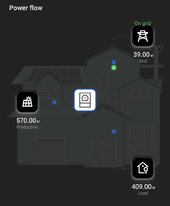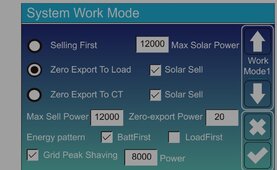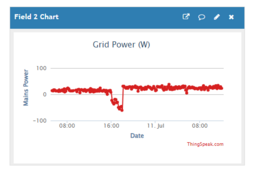Hello, there
At the end we have installed the new plant of our customer. DEYE SUN-15K-SG01HP3-EU-AM2 has been choosed (i insist of 20kW but the customer....). Anyway. Check the attached image below. I think it is weird - 570W PV power => 409W Load.
I did configure the "System Work Mode" to the following:
1. Zero Export to CT ( we do not want to sell energy to the grid)
2. Zero Export power - i did set this one with 050. A friend of mine tells me, that if this parameter is lower than this it is possible to export power back to the grid. I have read a lot of DEYE inverter settings but nothing concrete about this "parameter" and what it does. Most people prefer the 020 value. Can someone explain more about this one?
We use a factory CTs wich came along with the inverter 100A / 0.05A. The ratio has been set on 2000:1 in Advanced Settings.
Thanks in advance
P.s. The second picture is illustrative !!!
At the end we have installed the new plant of our customer. DEYE SUN-15K-SG01HP3-EU-AM2 has been choosed (i insist of 20kW but the customer....). Anyway. Check the attached image below. I think it is weird - 570W PV power => 409W Load.
I did configure the "System Work Mode" to the following:
1. Zero Export to CT ( we do not want to sell energy to the grid)
2. Zero Export power - i did set this one with 050. A friend of mine tells me, that if this parameter is lower than this it is possible to export power back to the grid. I have read a lot of DEYE inverter settings but nothing concrete about this "parameter" and what it does. Most people prefer the 020 value. Can someone explain more about this one?
We use a factory CTs wich came along with the inverter 100A / 0.05A. The ratio has been set on 2000:1 in Advanced Settings.
Thanks in advance
P.s. The second picture is illustrative !!!





